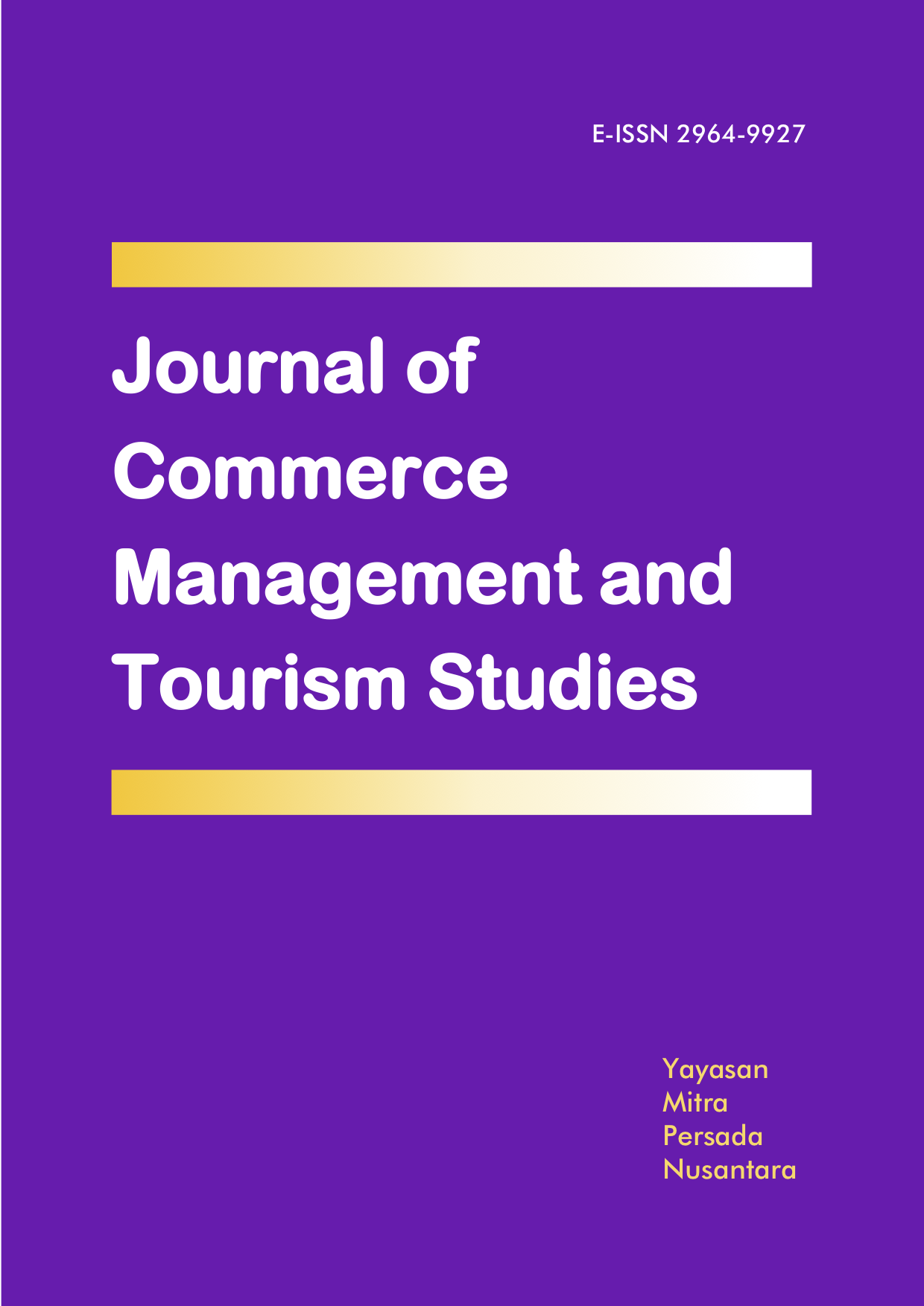Locational, neighbourhood and physical characteristics of residential rental properties: A review
DOI:
https://doi.org/10.58881/jcmts.v2i3.121Keywords:
housing preferences, rental property market, neighbourhood attributes, locational characteristicsAbstract
The residential rental market plays a crucial role in housing provision, yet our understanding of its locational, neighborhood, and physical characteristics remains limited. This paper presents a comprehensive review of existing literature pertaining to these fundamental aspects of residential rental properties. By synthesizing findings from a wide range of academic studies and reports, we aim to shed light on the key factors that influence the rental property landscape. The study strategically explores the locational attributes that impact rental property preferences and values. This includes proximity to essential amenities such as schools, hospitals, public transportation, and commercial centers. Understanding how these locational factors influence rental demand and pricing patterns can provide valuable insights for both renters and landlords., Investigate the role of neighborhood characteristics in shaping rental markets. Neighborhood safety, accessibility to recreational areas, quality of public services, and social demographics are among the key factors that influence rental property selection. By analyzing these features, we identify potential correlations between neighborhood attributes and rental property performance., the study delves into the physical characteristics of residential rental properties. This aspect involves examining the features of the properties themselves, such as property size, layout, age, and amenities. Understanding how these physical attributes affect rental values and tenant satisfaction can help property owners optimize their investments and improve tenant retention. Moreover, in this study the review addresses the dynamic interplay between locational, neighborhood, and physical factors in shaping rental property markets. By recognizing the complex relationships between these variables, policymakers, real estate developers, and investors can devise informed strategies to create sustainable and inclusive rental housing solutions. The paper concludes with a call for further research in this field, emphasizing the need for empirical studies that capture changing rental market dynamics, especially in the context of evolving urban landscapes and housing preferences. Through this comprehensive review, we aim to contribute to a deeper understanding of locational, neighborhood, and physical characteristics in residential rental properties, thus enabling more effective and evidence-based decision-making within the rental housing sector.
Downloads
References
Aalbers, M. B. (2016). The Geography of the Housing Market: Theoretical and Empirical Perspectives. Housing, Theory, and Society, 33(3), 287-305.
Aluko, O. (2011). Housing satisfaction and residential property values. International Journal of Housing Markets and Analysis, 4(3), 255-271
Anthony, O. (2012). The role of dwelling characteristics in housing prices determination in Lagos metropolis, Nigeria. International Journal of Housing Markets and Analysis, 5(2), 164-183
Azizianpour, F. (2008). Speculation in the real estate market: A case study of residential properties in a developing country. Journal of Property Investment & Finance, 26(5), 396-409
Chang, C. Y., & Lin, H. J. (2012). Investigating the impact of neighborhood characteristics on house price in Taipei, Taiwan using hierarchical linear modeling. Habitat International, 36(2), 291-298
Chau, K.W., Wong, S.K., & Yiu, C.Y. (2003). Value added to buildings by refurbishment in Hong Kong. Construction Management and Economics, 21(5), 499-507.
Cheshire, P., & Hilber, C. A. (2008). Office space supply restrictions in Britain: The political economy of market revenge. The Economic Journal, 118(529), F185-F221.
Chris, E. W., & Somefun, O. A. (2007). A Conceptual Framework of Rental Values of Residential Properties in Nigeria. Journal of Construction, 3(1), 41-47
Cooley, T., Clark, J., & Hill, R. (1995). The impact of a highway on land values: An application of spatial autoregressive techniques. Journal of Real Estate Finance and Economics, 11(2), 95-108
Dehring, C. A., Depken II, C. A., & Ward, M. R. (2007). The impact of stadium announcements on residential property values: Evidence from a natural experiment in Dallas-Fort Worth. Journal of Urban Economics, 61(1), 170-186
Feng, L., & Lu, M. (2010). Impact of educational facilities on residential property prices in Shanghai, China. Journal of Urban Planning and Development, 136(1), 23-31
Ge, L., & Du, Q. (2007). Exploratory study on the key factors of property value determination in Beijing. Journal of Chinese Real Estate, 6, 363-374.
Gibbs, C., & Warner, M. (2019). Neighborhood change and stigmatization in the 21st century: Can we overcome? Urban Studies, 56(9), 1805-1823.
Gilderbloom, J. I., & Markham, J. P. (2017). A short history of urban planning: From antiquity to the present. Routledge.
Haffner, M., & Elsinga, M. (2018). Preferences for renting or buying housing: The influence of lifestyle and cultural factors. Housing Studies, 33(7), 1031-1053.
Haizhen, L., Yan, S., & Lin, P. (2014). The impact of educational facilities on house values: Using property-level data from Beijing. Urban Studies, 51(1), 51-69
Han, Y., & Strange, W. C. (2018). The distributional effects of rent control: Evidence from San Francisco. American Economic Journal: Applied Economics, 10(2), 217-242.
Hans, R. A., & Jan, R. A. (2012). The impact of mixed land use on residential house prices. Journal of Real Estate Finance and Economics, 45(2), 470-486
Hui, E. C., Chan, E. H., & Chau, K. W. (2006). Spatial modeling of hedonic housing price model: A case study of Guangzhou, China. Habitat International, 30(3), 574-590
Jim, C. Y., & Chen, W. Y. (2006). Measurement and monitoring of urban sprawl in a rapidly growing region using entropy. Environmental Monitoring and Assessment, 120(1-3), 513-526
Jim, C. Y., & Chen, W. Y. (2007). Assessing the values of landscape preferences and uses in urban recreation planning. Landscape and Urban Planning, 83(1), 1-12
Jim, C. Y., & Chen, W. Y. (2009). Comprehensive greenspace planning based on landscape ecology principles in compact Nanjing, China. Landscape and Urban Planning, 90(1-2), 111-121
Kennedy, P., Charney, A., & Lane, D. (1996). On using geographic information systems in hedonic price studies of housing markets. Journal of Housing Economics, 5(2), 151-174
Kiel, K. A., Matheson, V. A., & Sullivan, A. M. (2010). Proximity to sports facilities and residential property values: A case study of M&T Bank Stadium and the Baltimore Ravens. Growth and Change, 41(3), 429-450
Kryvobokov, M. (2013). Real estate market segmentation: Methodological basis. International Journal of Strategic Property Management, 17(2), 197-209
Lake, I. R., Lovett, A. A., Hiscock, R., & De Hoogh, C. (2000). Evaluating regression models for the effects of air pollution on land use regression model predictions. Atmospheric Environment, 34(27), 4351-4363
McDonald, J. F., & MacMillan, R. (2007). Property value appreciation in selected Mississippi cities: What factors matter? Journal of Housing Research, 16(1), 33-47
McDonald, J. F., & MacMillan, R. (2007). Property value appreciation in selected Mississippi cities: What factors matter? Journal of Housing Research, 16(1), 33-47
Oloke, D. C., Simon, R. E., & Adesulu, D. (2013). Property Rating Valuation and Local Government Revenue Generation in Nigeria. International Journal of Business and Social Science, 4(2), 132-138
Olusegun, O. A. (2003). Property valuation and the concept of market value: An examination of the principles and practices in Nigeria. Property Management, 21(4), 254-266
Orford, S. (2002). The measurement of locational externalities in hedonic house price research: Spatial data and geographic information systems. International Journal of Housing Markets and Analysis, 5(2), 166-183
Ozanne, L., & Malpezzi, S. (1985). Housing economics and public policy. Lexington Books
Poudyal, N. C., Hodges, D. G., & Bowker, J. M. (2009). Factors influencing residential property values in wildland-urban interface communities. Land Economics, 85(2), 287-301
Poudyal, N. C., Hodges, D. G., & Bowker, J. M. (2009). Factors influencing residential property values in wildland-urban interface communities. Land Economics, 85(2), 287-301
Rambøll. (2021). The future of living: Global multifamily market report 2021. Retrieved from: https://www.ramboll.com/-/media/ramboll/images/urban-planning-design/future-of-living/global-multifamily-market-report-2021-final.pdf.
Redfearn, C. L. (2009). A comparison of spatial econometric models for the prediction of county-level retail sales. Journal of Geographical Systems, 11(4), 355-378
Sanchez, T. W. (1993). An analysis of the role of schools in property pricing. Journal of Urban Economics, 34(3), 317-333
Shami, M. (2011). Rental values determination: A study of rental housing market in urban areas. Property Management, 29(5), 469-482
Somalov, V. (2010). The impact of real estate agents on property prices: Evidence from a metropolitan housing market. International Journal of Housing Markets and Analysis, 3(4), 323-338
Somalov, V. (2010). The impact of real estate agents on property prices: Evidence from a metropolitan housing market. International Journal of Housing Markets and Analysis, 3(4), 323-338
Thorncroft, J. E. (1965). Some determinants of urban property values. Economic Geography, 41(3), 238-249
Tom, G. (2003). An investigation of the impact of high-voltage overhead transmission lines on property values in Runcorn, Cheshire. Journal of Real Estate Literature, 11(1), 3-16
Tom, G. (2003). An investigation of the impact of high-voltage overhead transmission lines on property values in Runcorn, Cheshire. Journal of Real Estate Literature, 11(1), 3-16
Turner, M. A., & Helms, V. (2019). The role of place in shaping the dynamics of neighborhood and housing choice in urban and suburban areas. Housing Policy Debate, 29(3), 405-432
Usman, A. A. (2015). Variations in rental values of residential properties in Nigerian towns and cities. Journal of Land Use and Development Studies, 2(1), 43-54
Usman, A. A. (2016). Variations in rental values of residential properties in Nigerian towns and cities. Journal of Land Use and Development Studies, 2(1), 43-54
Vakili, Z. (2008). Real estate agents' role in residential property prices: A comparative analysis of urban and suburban markets. Journal of Real Estate Research, 30(4), 431-452
Vakili, Z. (2008). Real estate agents' role in residential property prices: A comparative analysis of urban and suburban markets. Journal of Real Estate Research, 30(4), 431-452
Waddell, P., & Berry, B. J. (1993). A geographical information system model of households and housing prices. Journal of Housing Research, 4(2), 157-183
Xie, Z., Cai, Y., Wu, L., & Ma, Y. (2020). Location versus housing attributes: An analysis of housing prices in Shenzhen, China. Journal of Urban Planning and Development, 146(2), 04020004
Yau, Y. (2009). The relationship between building conditions and property values: A case study in Hong Kong. Building and Environment, 44(10), 2068-2073
Yiu, C. Y., & Wong, S. K. (2005). Identifying property market characteristics from micro-level data: Hong Kong as a case study. Habitat International, 29(3), 413-431
Downloads
Published
How to Cite
Issue
Section
License
Copyright (c) 2023 Adamu Sani, Mohammed Ishaq Mohammed, Hamza Usman

This work is licensed under a Creative Commons Attribution 4.0 International License.














